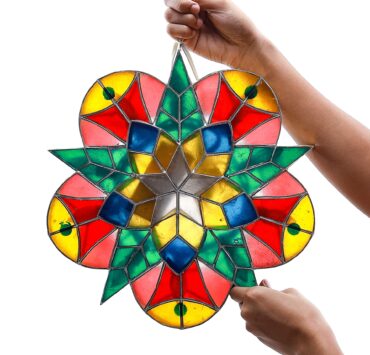Vineyards of the Archipelago: The Emergence of Wine Culture in the Philippines
The Philippines may be one of many countries that come to mind when considering wine production. Still, the emergence of vineyards in this tropical nation is a testament to the adaptability and innovation of Filipino winemakers. Over the years, the wine industry in the Philippines has seen its fair share of challenges and triumphs, resulting in wine culture’s growth and wine tourism in the archipelago. From its historical roots to its unique terroir, let’s delve deeper into the fascinating world of Philippine vineyards.
The Historical Roots of Philippine Vineyards
The history of wine production in the Philippines dates back to the early attempts by Filipino settlers and Spanish colonizers. Early on, these pioneers recognized the potential of the fertile lands and favorable climate for growing grapes. Despite facing numerous challenges, such as the lack of suitable grape varieties and wine-making knowledge, these early wine enthusiasts laid the foundation for the future of Philippine wine culture.
Early Attempts at Wine Production
Early Filipino settlers, particularly in the country’s northern regions, experimented with planting grapevines and making their wine. They were driven to create a local wine industry rivaling established wine-producing countries. These passionate individuals tirelessly worked the land, tending to their vineyards with unwavering dedication. However, due to limited resources, such as proper wine-making equipment and grape varieties that thrive in tropical climates, these early attempts were more of a labor of love than a commercially viable venture.
Despite their challenges, these early wine pioneers persevered, learning from their mistakes and constantly seeking ways to improve their wine-making techniques. They exchanged knowledge and insights with fellow wine enthusiasts, both locally and abroad, in their quest to bring the flavors of Philippine wine to the world.
As time went on, their efforts began to bear fruit. They discovered grape varieties that could thrive in the Philippine climate, adapting to the country’s unique conditions. These resilient vines produce grapes with distinct flavors, reflecting the rich tapestry of the Philippine terroir.
Spanish Influence on Wine Culture
The Spanish colonial period greatly influenced the development of wine culture in the Philippines. Spanish missionaries, who were well-versed in wine-making, introduced new grape varieties, techniques, and a deeper appreciation for wine. They recognized the potential of the Philippine soil and climate. They saw an opportunity to cultivate vineyards that could produce wines of exceptional quality.
During this time, monasteries were pivotal in the development of wine-making. With their vast knowledge and experience in wine-making, the Spanish monks established vineyards in strategic locations across the archipelago. These monastic vineyards served as a source of sacramental wine. They became centers of learning where the locals could acquire valuable wine-making knowledge.
Under the guidance of the Spanish monks, the locals learned the art of grafting, pruning, and harvesting grapes at the optimal time. They discovered the importance of terroir and how it influences the character and quality of the wine. The monks shared their wine-making secrets, passing down generations of knowledge that would shape the future of Philippine wine production.
The Growth of the Wine Industry in the Philippines
With the passage of time and technological advancements, the wine industry in the Philippines began to flourish. Today, key players in the Philippine wine scene have made significant contributions to the growth and development of the industry.
Key Players in the Philippine Wine Scene
Local wineries such as Casa Manila Wine, Villa Maria, and Lomboy Farms have taken the lead in producing quality wines in the Philippines. Through their dedication and expertise, these wineries have introduced innovative wine-making techniques and successfully cultivated grape varieties that thrive in the unique Filipino terroir.
Challenges and Triumphs of Local Wine Producers
Local wine producers have faced various challenges in their pursuit of excellence. Factors such as limited land availability, climate-related issues, and the need for extensive research and development have posed obstacles to the industry’s growth. However, through determination and continuous experimentation, Filipino winemakers have triumphed over these challenges and have gained recognition in international wine competitions.
The Rise of Wine Tourism in the Philippines
As the Philippine wine industry gains recognition, wine tourism has become increasingly popular. Wine enthusiasts and tourists are flocking to vineyards scattered across the archipelago to indulge in wine-tasting experiences and immerse themselves in the beauty of the vineyards.
Popular Vineyard Destinations for Wine Lovers
The cool climate regions of Batanes, Sagada, and Benguet provide picturesque settings for vineyards and offer breathtaking views of the surrounding landscapes. Visitors can wander through vineyards, learn about the wine-making process, and enjoy the fruits of the labor with a glass of local wine.
Wine Tasting Experiences in the Archipelago
Wine enthusiasts can experience Philippine wines’ unique flavors and aromas through wine-tasting sessions offered by local wineries. From crisp whites to full-bodied reds, these tastings allow visitors to explore the diversity of the Philippine wine scene and appreciate the craftsmanship behind each bottle.
For those who wish to take a piece of this emerging wine culture home or revisit their favorite flavors, online wine delivery in the Philippines ensures that these carefully crafted wines are just a click away. This service bridges the gap between the vineyards and homes, making it easier than ever for enthusiasts to explore and enjoy the diverse offerings of the Philippine wine scene. Thirst: Philippine’s First Online Liquor Marketplace has a wide array of wines in their selection, making it a good option for enthusiasts looking to satisfy their cravings.
Understanding the Unique Filipino Terroir
Despite being located in a tropical region, the Philippines possesses a unique terroir that contributes to the distinct characteristics of its wines. Climate, soil, and topography create an environment conducive to grape cultivation.
The Impact of Climate on Vine Growth
The hot and humid climate of the Philippines is not ideal for growing grapes. However, the diverse micro-climates across the archipelago offer varying temperature ranges, allowing for cultivating both cool-climate and warm-climate grape varieties. The cool highlands of the Cordillera region provide the necessary cool temperatures for grapes such as Chardonnay and Pinot Noir. At the same time, the warm lowlands are suitable for varieties like Syrah and Cabernet Sauvignon.
Varieties of Grapes Cultivated in the Philippines
Local wineries have successfully identified grape varieties that thrive in the Filipino terroir. These include the native grape variety, Bignay, known for its tartness and often used to make sparkling wines. Other types, such as Cabernet Sauvignon, Chardonnay, and Syrah, have also been successfully cultivated, showcasing the versatility of the Filipino terroir.
The Future of Wine Culture in the Philippines
The future of Philippine wine culture is filled with excitement and possibilities. As the industry continues to evolve, innovations and developments are on the horizon, ensuring that Filipino wines will continue gaining global recognition.
Innovations in Philippine Wine Production
Philippine winemakers constantly push the boundaries of traditional wine-making techniques, experiment with new grape varieties, and embrace sustainable practices. These innovations improve the quality of the wines and showcase Filipino winemakers’ creativity and ingenuity.
The Role of Wine in Filipino Cuisine and Celebrations
Wine has long been an integral part of Filipino culture, both in the kitchen and during parties. From traditional fiestas to intimate gatherings, wine has become an integral part of the Filipino dining experience. As more Filipinos develop a taste for wine, the demand for locally produced wines is expected to grow, further driving the growth of wine culture in the Philippines.
Final Words
The emergence of vineyards in the Philippines represents the resilience and passion of Filipino winemakers. They have established a thriving wine industry in a tropical nation through their determination and creativity. From the historical roots to the unique terroir and the rise of wine tourism, the future looks promising for the vineyards of the archipelago. So, raise a glass of Philippine wine and toast to the emergence of wine culture in the Philippines!



